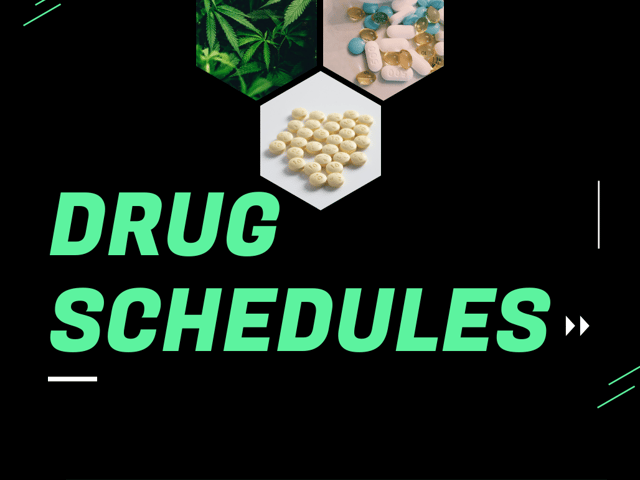
Drug Schedules/Classifications
The Controlled Substances Act (CSA) has classified certain drugs, chemicals, and substances into five schedules, or categories, according to their potential for abuse and accepted medical use. Any facility that dispenses these substances must be registered with the Drug Enforcement Agency (DEA), and a physician must have a DEA number if he or she would like to be able to write prescriptions for controlled substances. Level 1 drugs are typically not prescribed as their use isn’t medically helpful (or legal). However, this is changing in some areas as state laws allow for the use of marijuana for certain medical conditions. Prescriptions for classes II-V can be handwritten or computer generated, but must be hand signed in ink by the physician. Class II drugs are non-refillable, but classes III-V typically allow for up to 5 refills within six months of the date of prescription.
The drug schedules are as follows:
Level I
Highest level of abuse with no legally accepted medical use.
Examples: heroin, crack, marijuana, ecstasy, Lysergic acid diethylamide (LSD)
Level II
Medical benefits, but a high level of abuse potential due to their strong risk of psychological and physical dependency.
Examples: cocaine, morphine, fentanyl, Codeine, Ritalin, Oxycontin, Dilaudid
Level III
Medical benefits, with a moderate to low risk of abuse that is lower than Schedule I and II drugs.
Examples: testosterone, Lortab, Tylenol with Codeine
Level IV
Medical benefits with a low risk of abuse and physical/psychological dependence
Examples: Ativan, Xanax, Stadol, Valium
Level V
Medical benefits with the lowest abuse and addiction potential if the five categories.
Examples: Lomotil, Robitussin AC, Lyrica

Keep Reading

PTCB Pharmacy Technician Certification Exam Blog
Memorable Mnemonics: Master Drug Knowledge for the PTCB Exam
Studying for the Pharmacy Technician Certification Board (PTCB) exam is…

PTCB Pharmacy Technician Certification Exam Blog
The Top 200 Drugs on the PTCB
The Pharmacy Technician Certification Board (PTCB) exam is the final st…

PTCB Pharmacy Technician Certification Exam Blog
Is the PTCB Exam Hard?
Is the PTCB Exam Hard? Did you know that in 2021, over 430,000 pharmac…